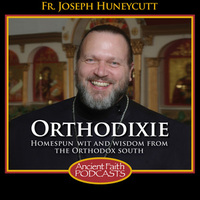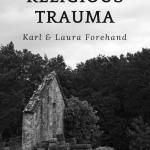Muslim keeps the keys at the holiest site in Christendom
By MATTHEW KALMAN, Scripps Howard News Service, March 23, 2005
 JERUSALEM – Every day at 4 a.m., Wajeeh Nuseibeh walks through the walled Old City of Jerusalem to the Church of the Holy Sepulchre, the holiest shrine in Christendom. Most Christians believe it is the site of the crucifixion, tomb and resurrection of Jesus.
JERUSALEM – Every day at 4 a.m., Wajeeh Nuseibeh walks through the walled Old City of Jerusalem to the Church of the Holy Sepulchre, the holiest shrine in Christendom. Most Christians believe it is the site of the crucifixion, tomb and resurrection of Jesus.
Nuseibeh takes an ancient 12-inch iron key, climbs a small ladder and opens the huge wooden doors.
Every evening at nightfall, after three raps of an iron door knocker spaced out over half an hour, Nuseibeh closes up for the night and places the key in safekeeping.
He inherited the job from his father and grandfather, part of a chain stretching back more than 1,300 years.
But surprisingly for the doorkeeper of the site of the Crucifixion, Nuseibeh, 55, like his ancestors, is a Muslim.
“It goes from father to son, from one generation to the next,” said Nuseibeh, a small, dapper man in a suit and tie, with a dark mustache. “I was 15 when I first opened the church. I thought it was fun. As I grew up I realized it is a big responsibility.”
The Holy Sepulchre is a vast warren of chapels, tunnels and caves with pieces of church architecture dating back to the fourth century and spanning a broad range of traditions from the Westernized cathedral of the Catholics to the Eastern brass and icons of the Orthodox churches.
It houses the final stations on the Via Dolorosa – the journey of Jesus to his crucifixion – and attracts hundreds of thousands of pilgrims and sightseers every year.
The church is jealously managed by five competing and often warring Christian denominations. Sometimes the tensions over the right to clean or pray in an area of the church spills over into violence.
Nuseibeh’s family has helped keep the peace between them since Caliph Omar Ibn Kattab first conquered Jerusalem for the Muslims in 638. The only gap was 88 years of crusader rule in the 12th century. According to the family history, when Salah A-Din recaptured Jerusalem in 1191, he promised Richard the Lion Heart he would invite the Nuseibeh family members to resume their role as custodians. Since that time, Judeh family members, also Muslims, have been given the key for safekeeping overnight. The two families have shared the position ever since.
Once a year, the three biggest denominations – Greek Orthodox, Roman Catholic and Armenian – publicly renew their request to Nuseibeh to be the “custodian and door-keeper” as written on his business card and multimedia Web site.
About 100 years ago, the key was stolen. Now they keep a spare inside the church. Nuseibeh receives $15 every month for his labor, but the ancient honor is worth more to him than the token payment. When tensions boil over between the churches, Nuseibeh is the one who calms the waters.
“Like all brothers, they sometimes have problems. We help them settle their disputes. We are the neutral people in the church. We are the United Nations. We help preserve peace in this holy place,” he said.
Nuseibeh said he still becomes anxious before big ceremonies, or when important visitors arrive.
“I realize there are thousands of people waiting to go into the church and they are waiting for me to open it, and I start to imagine what will happen if the lock will be broken or the key is damaged and I can’t open the door,” he said.
But it has never happened in the 20 years since he took over from his father. He hopes that one day his son Obadah, now 21, will step into his footsteps, but it’s not certain.
“He is at college, studying to be a sports trainer,” said Nuseibeh. “Maybe he will not follow me, and then my brother or my cousin will take over.”
Easter celebrations at the Holy Sepulchre will place the diminutive Muslim center-stage as thousands flock to the church for services, processions and the ancient ceremony of the Holy Fire, in which Nuseibeh plays a central role.
The ceremony is held each year on Easter Saturday and symbolizes the resurrection of Christ. Thousands of worshippers pack into the church around the marble-clad tomb where Jesus’ body was laid. The oil lamps inside the empty tomb are extinguished and a huge stone rolled across the entrance, which is then sealed shut by Greek Orthodox priests.
“If there are no oil lamps lit, the tomb will be sealed with wax. I am the witness. I put my stamp, the name of the family, in the wax on the tomb,” Nuseibeh said.
What happens next looks like a miracle. The Orthodox patriarch begins to pray, and a bluish Holy Fire begins to emanate from within the tomb, lighting the lamps and sometimes flying around the church, over the heads of the assembled worshippers, lighting the candles of believers.
Nuseibeh, who has been the official witness at this ceremony for more than 20 years, said he was deeply touched by the Christian rituals and felt a close affinity with the church, but he does not pray there.
“I know every stone. It is like my home,” he said. “But I go to pray at the Omar Mosque next door.”
Thanks to FWD from Fr Victor Potapov.











